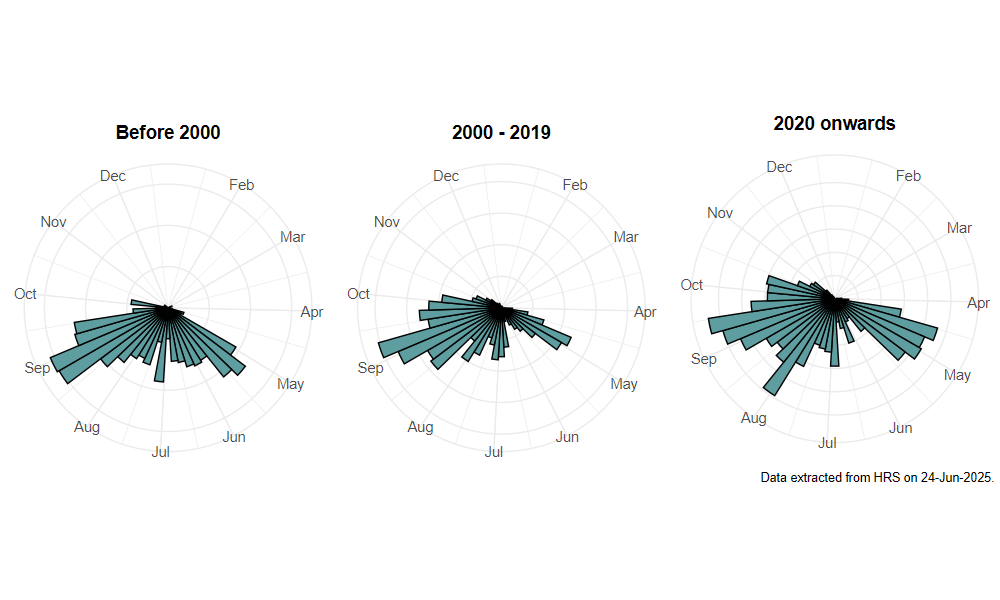Didea fasciata Macquart, 1834
Identification
Identification difficulty = 3. ![]()
![]() according to Ball & Morris, 20241
according to Ball & Morris, 20241
Biology
The larva is aphidophagous and arboreal on both coniferous and deciduous trees. Adults are generally found in or near woodland, including conifer plantations and scrub, where the males aggressively defend sun-lit patches. Typical localities include rides and clearings and tracks through trees.
Flight period
The following plots show the number of unique records per week excluding those reported to be of immature stages.

Status
Was listed as 'Notable' by Falk, 19912, but dropped from this status by Ball & Morris, 20143 who consider it LOWER RISK.
Distribution
Widespread throughout Britain. Whilst listed by Stubbs (1982)4 as a 'good' primary woodland indicator, records submitted to the recording scheme suggest that it occurs in woodlands of all types, including conifer plantations, secondary woodland and scrub.

Trends
The following plots show the Frescalo TFactor vs year and a map of the rescaled frequency (all records) for the species.
-
Ball, S., & Morris, R. (2024). Hoverflies of Britain and Ireland. WILDGuides (3rd ed.). Oxford: Princeton University Press. ↩
-
Falk, S. (1991). A review of the scarce and threatened flies of Great Britain. ( No. 39). Research and Survey in Nature Conservation (pp. 1–194). Peterborough: NCC. ↩
-
Ball, S., & Morris, R. (2014). A review of the scarce and threatened flies of Great Britain. Part 6: Syrphidae. ( No. 9). Species status (pp. 1–130). Peterborough: JNCC. ↩
-
Stubbs, A. (1982). Hoverflies as primary woodland indicators with reference to Wharncliffe Wood. Sorby Record, 20, 62–67. ↩